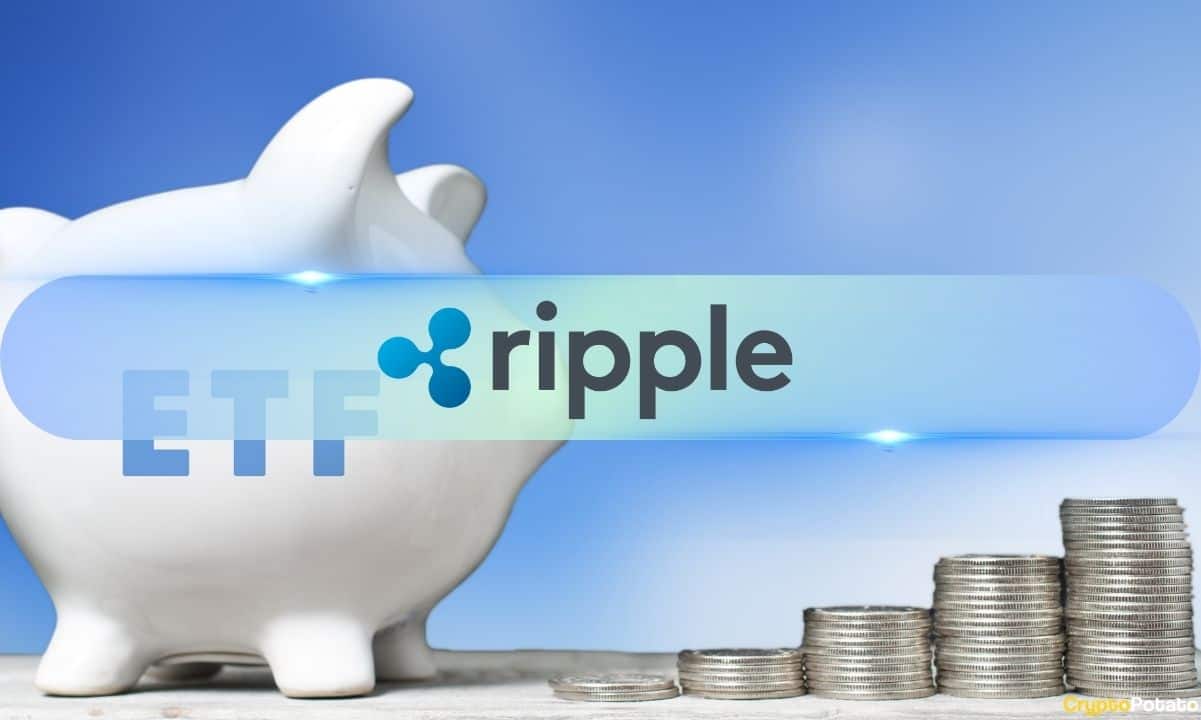Bitcoin ETFs Hit Record Outflows as Saylor Denies Strategy Sell-Off Rumors
Spot Bitcoin ETFs experienced their second-largest daily outflows on record this week, triggering market concerns about institutional sentiment shifts. Meanwhile, MicroStrategy chairman Michael Saylor forcefully denied circulating rumors that his company had sold Bitcoin holdings, reaffirming the firm's unwavering commitment to its Bitcoin accumulation strategy amid heightened market volatility.
Massive ETF Outflows Signal Investor Caution
U.S. spot Bitcoin ETFs recorded approximately $680 million in net outflows, marking the second-highest single-day withdrawal since these products launched in January 2024. The massive capital exodus suggests institutional investors are reassessing positions as Bitcoin volatility intensifies and macroeconomic uncertainties persist.
The outflows were concentrated across several major ETF providers. BlackRock's IBIT, despite its market dominance, saw significant redemptions alongside products from Fidelity, ARK Invest, and other providers. Only a handful of smaller ETFs managed to attract modest inflows, insufficient to offset the broader exodus.
This development represents a notable shift from recent trends. Bitcoin ETFs had experienced relatively stable or positive flows throughout much of 2024 and early 2025, with institutional adoption appearing robust. The sudden reversal raises questions about whether near-term sentiment has fundamentally changed or if this represents temporary profit-taking.
Market analysts point to several potential catalysts for the outflows. Bitcoin's recent surge past $100,000 may have prompted some institutional investors to take profits after substantial gains. Additionally, broader market volatility, regulatory uncertainties, and macroeconomic concerns could be driving more conservative positioning.
The outflows occurred during a period of heightened Bitcoin price volatility. After reaching all-time highs above $106,000, Bitcoin experienced sharp intraday swings, creating uncertainty for institutional holders. ETF investors typically favor stability, making extreme volatility a potential trigger for redemptions.
Comparing to historical patterns, only one previous day has seen larger ETF outflows. That earlier record occurred during a period of significant market stress, suggesting the current outflows reflect meaningful institutional concern rather than routine portfolio rebalancing.
Michael Saylor's Forceful Denial
Amid the market turbulence, rumors circulated on social media and trading forums suggesting MicroStrategy had sold some or all of its substantial Bitcoin holdings. These unfounded claims prompted an immediate and forceful response from company chairman Michael Saylor.
Saylor took to social media platform X to categorically deny the rumors, calling them "fake news" and reiterating MicroStrategy's steadfast commitment to its Bitcoin strategy. His response was characteristically direct, leaving no ambiguity about the company's intentions.
The rumors appear to have originated from misinterpretations of market data or deliberate misinformation. MicroStrategy's Bitcoin holdings are publicly disclosed through regulatory filings, making any substantial sales immediately visible. No such filings or evidence supporting the rumors existed.
MicroStrategy remains one of the world's largest corporate Bitcoin holders, with approximately 444,262 BTC acquired at an aggregate purchase price of roughly $27.1 billion. The company's average cost basis stands around $61,000 per Bitcoin, meaning current prices still represent substantial unrealized gains.
Saylor's Bitcoin advocacy has become legendary in cryptocurrency circles. Since initiating MicroStrategy's Bitcoin strategy in August 2020, he has become arguably the most prominent corporate champion of Bitcoin as a treasury reserve asset. His consistent messaging has influenced numerous other companies to consider similar strategies.
The company continues actively accumulating Bitcoin through various financing mechanisms including convertible debt offerings, equity raises, and operational cash flow. Just recently, MicroStrategy announced additional Bitcoin purchases, demonstrating ongoing commitment despite market volatility.
Saylor's quick response to the rumors reflects understanding of how misinformation can impact markets. False narratives about major holders selling can create panic and accelerate downward price pressure, making rapid clarification essential for market stability.
Market Impact and Investor Sentiment
The combination of record ETF outflows and Saylor rumor denial created a complex market dynamic. Bitcoin prices experienced heightened volatility as traders processed these developments and reassessed positioning.
Initial market reactions were negative, with Bitcoin declining several percentage points as news of the ETF outflows spread. However, Saylor's forceful denial helped stabilize sentiment, preventing further deterioration and demonstrating how influential voices can shape market psychology.
Trading volumes spiked significantly during this period, indicating active position adjustments across the market. Both spot and derivatives markets saw increased activity as investors responded to the news flow and reassessed risk exposure.
The outflows raised questions about institutional conviction at current price levels. After Bitcoin's remarkable rally from under $70,000 to above $106,000 in recent months, some profit-taking appears natural. Whether this represents healthy consolidation or the beginning of more substantial institutional retreat remains unclear.
Long-term Bitcoin holders appeared largely unfazed by the developments. On-chain data shows minimal movement from addresses holding Bitcoin for extended periods, suggesting conviction among long-term investors remains intact despite short-term institutional flows.
The incident highlighted ongoing tensions between different investor classes. ETF holders often have shorter time horizons and different risk tolerances compared to long-term holders like MicroStrategy. These differing perspectives create natural ebb and flow in market dynamics.
Broader Context and Market Dynamics
Understanding the ETF outflows and rumor dynamics requires examining broader cryptocurrency market conditions and institutional adoption trends.
Bitcoin's recent price action has been remarkably volatile even by cryptocurrency standards. After surpassing $100,000 for the first time, the asset experienced sharp intraday swings of several thousand dollars, creating challenging conditions for institutional investors accustomed to more stable assets.
Macroeconomic factors continue influencing cryptocurrency markets. Federal Reserve policy, inflation data, and broader equity market performance all impact Bitcoin through various transmission mechanisms. Recent economic uncertainty may be encouraging more defensive institutional positioning.
Regulatory developments also matter significantly. Ongoing discussions about cryptocurrency regulation, potential policy changes, and enforcement actions create uncertainty that can trigger institutional caution. ETF investors may be particularly sensitive to regulatory risks given their reliance on approved investment vehicles.
The ETF market itself continues maturing. As these products accumulate operating history, investors gain better understanding of flows, pricing dynamics, and optimal usage. Some outflows may simply reflect normal market development rather than fundamental Bitcoin skepticism.
Competition among ETF providers has intensified. While BlackRock's IBIT maintains clear market leadership, other providers continue vying for market share through fee reductions, marketing, and product differentiation. This competitive dynamic affects flow patterns across different products.
Seasonal factors may also play a role. Historical patterns show November and December often feature increased volatility and position adjustments as institutional investors close books for year-end. Current outflows could partially reflect this seasonal dynamic.
MicroStrategy's Unwavering Strategy
MicroStrategy's Bitcoin strategy remains central to the company's identity and Michael Saylor's personal brand. Understanding this commitment provides context for why rumors of sales prompted such forceful denials.
The company has explicitly positioned Bitcoin as its primary treasury reserve asset, viewing it as superior to cash for preserving and growing shareholder value. This philosophy drives continuous accumulation regardless of short-term price fluctuations.
MicroStrategy's financial engineering around Bitcoin has been innovative and controversial. The company regularly issues convertible debt at favorable terms, using proceeds to purchase additional Bitcoin. This leveraged approach amplifies both potential gains and risks.
Shareholders have generally supported this strategy, evidenced by the stock's significant appreciation. MSTR stock has vastly outperformed Bitcoin itself at times, as investors effectively gain leveraged Bitcoin exposure through the equity.
Critics question the sustainability of this approach, particularly regarding debt servicing obligations if Bitcoin prices decline substantially. However, the company maintains that its cost basis and Bitcoin's long-term trajectory provide sufficient cushion against realistic downside scenarios.
Saylor's personal conviction appears absolute. His public statements consistently emphasize Bitcoin's role as digital property and the ultimate long-term store of value. This philosophical commitment makes selling inconceivable within his worldview.
The company's transparency about holdings and purchases has built credibility. Regular announcements of Bitcoin acquisitions, detailed disclosure of cost basis and financing structures, and clear strategic communication have created trust with investors.
Implications for Institutional Adoption
The ETF outflows and surrounding dynamics carry implications for Bitcoin's broader institutional adoption trajectory.
Short-term volatility in ETF flows doesn't necessarily indicate failing institutional interest. These products are still relatively new, and flow patterns will naturally fluctuate as markets evolve and investors adjust to cryptocurrency's unique characteristics.
The existence of liquid, regulated ETFs actually facilitates both entries and exits, making institutional participation more feasible. Some investors will inevitably take profits after substantial rallies, but the infrastructure remains in place for reentry when conditions seem favorable.
Different institutional investor types have varying strategies and time horizons. Some pursue tactical trades around Bitcoin, while others build long-term strategic positions. Both approaches generate flows that can appear contradictory in isolation but represent healthy market diversity.
The MicroStrategy example demonstrates that committed institutional holders exist despite short-term flow volatility. Companies truly adopting Bitcoin as treasury assets think in multi-year or indefinite timeframes, providing stability beyond ETF flow fluctuations.
Growing institutional infrastructure continues supporting adoption. Custody solutions, regulatory clarity, accounting standards, and financial products all advance, making Bitcoin increasingly accessible to institutions despite periodic sentiment shifts.
Educational efforts are gradually improving institutional understanding. As more investment committees study Bitcoin's properties, monetary theory, and network fundamentals, conviction-based long-term holders may increase, reducing sensitivity to short-term volatility.
Looking Forward
Near-term Bitcoin market dynamics will likely remain volatile as investors digest recent price action, institutional flows, and macroeconomic developments.
ETF flows will continue serving as important sentiment indicators. Sustained outflows would raise concerns about institutional conviction, while stabilization or reversal would suggest current movements represent healthy profit-taking rather than fundamental position shifts.
MicroStrategy's ongoing accumulation will remain a market focal point. Future purchase announcements will be scrutinized for insights into Saylor's market outlook and the company's ability to continue financing acquisitions.
The broader question of institutional adoption trajectory remains open. Bitcoin has achieved remarkable institutional acceptance over recent years, but the path forward involves natural consolidations and setbacks alongside continued progress.
Market participants should expect continued volatility. Bitcoin's price discovery at new highs naturally involves heightened uncertainty and position adjustments. Historical patterns suggest consolidation periods following major rallies before potential continuation.
Regulatory developments will significantly influence institutional flows. Positive regulatory clarity could reignite inflows, while adverse developments might trigger additional caution.
Conclusion
The combination of record Bitcoin ETF outflows and Michael Saylor's forceful denial of MicroStrategy selling rumors created significant market drama this week. These developments highlight the complex, evolving dynamics of institutional Bitcoin participation.
The substantial ETF outflows reflect genuine institutional caution, whether driven by profit-taking after Bitcoin's surge past $100,000, macroeconomic concerns, or short-term volatility aversion. While concerning, single-day flows don't necessarily indicate fundamental institutional retreat from Bitcoin.
Saylor's immediate rumor denial demonstrates the sensitivity around major holder actions and the potential for misinformation to impact markets. His response reinforced MicroStrategy's unwavering Bitcoin commitment and helped stabilize market sentiment.
These events underscore Bitcoin's maturation as an institutional asset. Significant capital flows, influential corporate holders, and sophisticated market participants all contribute to more complex dynamics than Bitcoin's early days. Understanding these evolving patterns is essential for market participants.
Looking ahead, institutional Bitcoin adoption will continue evolving through natural cycles of enthusiasm and caution. The infrastructure supporting institutional participation continues strengthening, even as short-term flows fluctuate. Long-term trajectory appears intact despite periodic volatility and position adjustments.
You May Also Like

After XRPC, the Race Is On: Which XRP ETF Will Hit the Market Next?

A Netflix ‘KPop Demon Hunters’ Short Film Has Been Rated For Release
